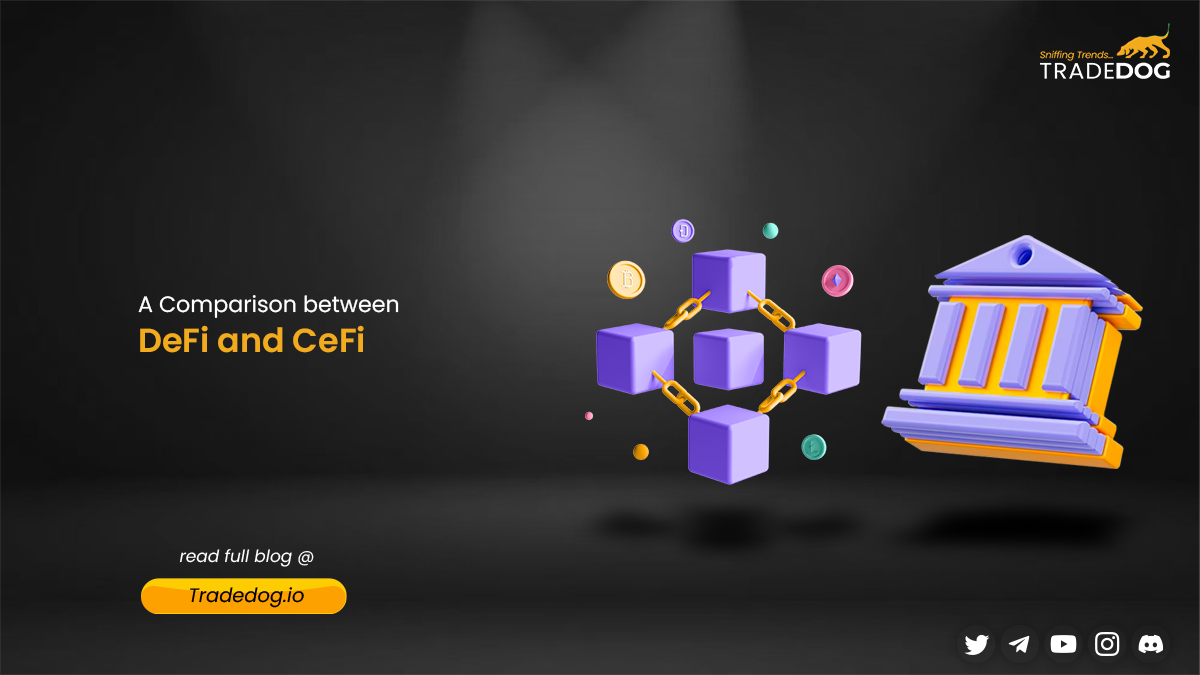Let us talk about the blockchain, “blockchain is a distributed, decentralized, public ledger.” In a nutshell, it is a reservoir of scores of verified transactions underpinning cryptocurrencies but more of advanced record-keeping technology with disruptive powers.
So you’re into crypto and find it too difficult to make sense of the technology; especially the jargon that makes you scratch your head. Don’t worry, You’re one amongst thousands of others who are not well versed with the numerous terms in crypto. Let us make it easier for you to comprehend the technology that is synonymous with the entire crypto lexicon. To make crypto accessible to everyone, TradeDOG will simplify the complications and make the concept more accessible for people to make it understandable, transparent, and logical.
Let us explore the crypto Jargon and determine its meaning:
Common crypto terms
Blockchain: Blockchains are distributed ledgers, secured by cryptography. They are public databases containing the history of every single transaction that ever took place. The transactions are stored on blocks representing a ledger that has entries of transactions stacked on top of each other. It is further supported and maintained by ‘Miners’ who are vital to verify the transactions initiated between users.
Node: Node or the ‘Miner’ maintain the ledger by solving computational algorithms to verify and compile transactions. Since most blockchains are permissionless, anyone with essential computer hardware can become a node by downloading the cryptocurrency’s blockchain into their computers.
Cold Storage: Cold Storage refers to the action of moving all your digital assets into offline places such as hardware wallets, USB drives or printing the Qr code of your online wallet and keeping it in your drawer. Keeping your cryptocurrencies offline prevents online scams, and hacking and safeguards your assets.
Hardware Wallets: These are offline devices aimed at storing all your coins in one place. The common ones are Ledger Nano S and Trezor.
Software Wallets: These wallets are popularly associated with online databases stored on a computer. Software wallets are downloadable and MEW for Ethereum (My Ether Wallet) and Atomic Wallet for Bitcoin are some prominent ones.
PoS: Proof of Stake is a consensus algorithm that is required to reach an agreement that ensures that all the transactions occurring on the blockchain are genuine. Participants, thus arrive at a consensus on the status of the ledger. In other words, the consensus mechanism approves the sanctity of a specific ledger or transaction. The staking refers to the number of coins a miner has held in their wallets. The higher the number of coins held, the higher the mining power they possess. The most popular PoS coins are Dash, Tezos, and NEO. It also helps the miner to generate a passive income by staking PoS cryptocurrencies.
PoW: Proof of Work was adopted in money by Hal Finney, the computer scientist who also exchanged the first bitcoin in a transaction between Satoshi Nakamoto and himself. It was later adopted as the consensus mechanism in bitcoin which continues to this day. Through PoW it gets next to impossible to alter any aspect of the ledger in a blockchain since any alteration would require re-mining all the previous blocks and it will take unimaginable power to do so.
Fork: A technical aspect of blockchain architecture. The blockchain diverges into two paths and the main chain is split into another thus denoting the name ‘fork’. It usually happens to make a blockchain scalable and efficient in terms of throughput (transaction verification).
Mining: Mining is a method to verify transactions appearing on a blockchain. It refers to solving complex mathematical calculations based on cryptographic hashes when a transaction is initiated. This entire process is validated by Miners with utmost precision based on cryptography, encryption, and decentralization. Miners compete with each other to solve a given problem first and prevent a double-spend scenario in which a single coin is spent twice.
Hash: A hash is a cryptographic function that converts an input of letters and numbers into an encrypted output of a fixed length. The Hash is created by algorithms and is essential to blockchain computation. Hash is developed based on the information stored on a specific block of the ledger and it is employed in verifying transactions to make the entire network tamper-proof and increases the safety and security of the blockchain.
Conclusion
Aspiring crypto traders have always struggled to learn crypto in its entirety but the lack of resourceful information has deterred them from making moves further. TradeDOG believes that no one should be deprived of crypto trading and will continue to impart necessary yet easy learning material for all the crypto enthusiasts out there.









